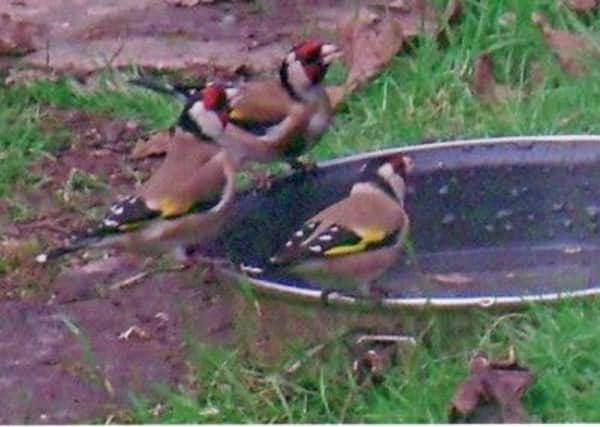Chevils makingan increasedappearance...


There have been a lot of goldfinches about this year and it could be something to do with all the overgrown hedges we are seeing these days and also the wild headland strips around farmers’ fields where tall weeds can grow and make seed for the finches.
Then there are all the wild bird seed strips around pheasant pens with plants such as millet and sunflowers which will attract these small birds. Why are goldfinches called Chevils in old Sussex? Does anybody know? Also Cheveril. The name means nothing to me. Another name as Thistle-bird, which has an obvious derivation. They are never happier than when perched on the globe of a spear thistle which has gone to seed. They fling the white parachutes one side and the other, as they did out the seeds.
Advertisement
Hide AdAdvertisement
Hide AdTeasels are another favourite and these have increased in number along the byways. About three to four thousand goldfinches move through the county, along the coast mainly, in October each year. That is nothing to what was recorded back in 1860 when a Mr R Gray recorded, in the Zoological Journal, that 166,176 goldfinches were trapped on the coast round Worthing in that year. Bird trapping on the Downs was then a major industry. Hundreds of men were either self-employed or sent out by large country estates as servants of the house, to harvest the vast flocks of skylarks, wheatears and finches that moved across the county on migration in autumn from eastern Europe.
Now, I wonder if you have ever seen a goldfinch’s nest? It is something never to be forgotten, for it is easily the neatest nest of any British bird, and resembles those of the humming birds. It is a small tightly woven cup no bigger than a really mean jam tart. Sheep’s wool is plaited with all the finesse of a Persian carpet weaver. This is slung securely onto the very end of a long swaying bow of an apple tree or tall old hazel in the hedge. This is why it suggested that today’s overgrown hedges are now useful to the goldfinch. Hedges these days have almost become rews.
This cup is held together with copious strands of spider’s silk, and a spangling of lichen for camouflage. Some fine rootlets may be used to strengthen the rim as well as the finest stems of grasses such as sheep’s fescue or heath bents. The inside is lined with soft plant material or vegetable downs, which might include last year’s thistle down.
When we were children in Norfolk we called goldfinches, King Harrys. I do not know how that name was conceived. But some others such as Gold Spink, Redcap, and Proud-tail are obvious. The name Draw-water, used in the North of England, describes exactly what I saw outside my kitchen window in the summer.